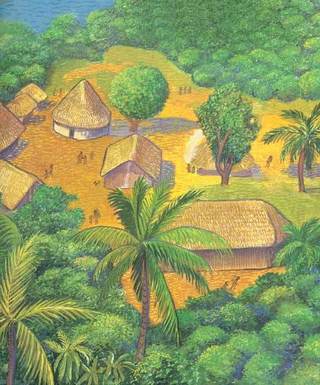The Shaman's Apprentice
by Lynne Cherry and Mark Plotkin, illustrated by Lynne Cherry

A Letter from Lynne Cherry about Writing, Researching and Illustrating The Shaman's Apprentice
A Visit to Kwamala Part I
I met the ethnobotanist Mark Plotkin in the 1980's when I was artist-in-residence at The World Wildlife Fund in Wasington, DC. I was there illustrating The Great Kapok Tree and making sure that those illustrations were scientifically accurate.
Mark told me about the research he was doing with the Tirio indians who lived in a village called Kwamala in the Amazon rain forest in Suriname. He was learning from the Tirio shaman--medicine man--about the plants that he used for healing.
Many years later, I found myself in a little bush plane flying for two hours over unbroken rain forest--from horiozon to horizon all I could see were trees.
From the air, as we circled Kwama, we saw all the villagers stop what they were doing and head toward a narrow dirt strip carved out of the forest. The entire village had come out to watch our bumpy landing and greet us. With wide smiles, laughs and shouts of joy, they embraced Mark and welcomed us.
As we walked over the footbridge over the stream and through the village, the prop plane took off again. We turned around and watched it disappear over the horizon.
Mark had been here many times over the years but this was my first visit. I had entered another world.